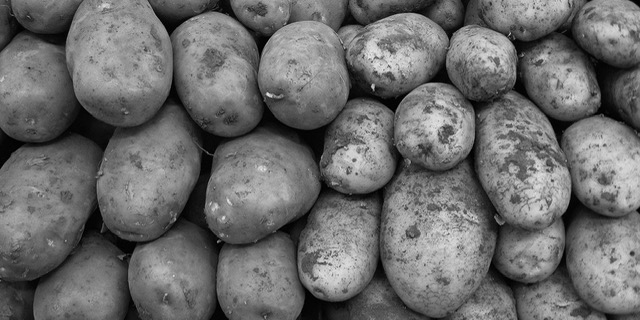
POTATOES
(Solanum tuberosum)
Thousands of years ago, high in the Andes mountains of Peru, ancient people grew and harvested the potato as their ancestors had already been doing for hundreds of years before them. This dependable food source enabled them to feed their population which would later become the mighty Inca empire. The Inca were admired and feared by neighboring tribes who were victims of raids for slaves and human sacrifice. The pyramids and temples of the Inca remain today as a testament to their great civilization.
The Inca ate potatoes baked with edible clay. They boiled, peeled, and mashed them. They also made potato starch. Inca’s had a technique for persevering potatoes; ‘chuno’ which could last for years without refrigeration. It was the food that protected them in times of poor harvest against starvation and fed their powerful Inca army. Chuno was made by spreading potatoes outside to freeze on cold nights, then thawing them in the morning sun. Repeated freeze-thaw cycles transform the spuds into soft, juicy blobs that resembled today’s gnocchi, a potato dumpling from central Italy.
The Inca reigned for thousands of years before the arrival of the first Europeans from Spain. In the 1620’s the Spanish who were devote Catholics brought Christianity to the New World, as well as strange and deadly diseases for which the natives had no immunity. In return the Conquistadors took shiploads of gold and silver back to Spain as well as new plants and foods including potatoes.
When potatoes reached Spain, they were met with skepticism. The tuber looked unappetizing and lacked flavor on its own. In spite of this the potato would soon change the world and fuel the industrial revolution.
Potatoes were hardier and easier to grow than wheat. When wheat or corn is knocked over by a storm the entire plant is damaged. Potatoes, growing underground are able to withstand this damage. Wheat was also very susceptible to diseases and crop loss. Because of this problem there were often times of starvation in European countries which lead to unrest and riots. It is believed that potatoes brought an end to these cycles of starvation.
Rulers of these nations saw the potential of potatoes and worked hard to get their people to eat them. When potato plants bloom, they send up five-lobed flowers that spangle fields like fat purple stars. By some accounts, Marie Antoinette liked the blossoms so much that she put them in her hair. Her husband, Louis XVI, put one in his buttonhole, inspiring a brief vogue in which the French aristocracy ‘swanned’ around with potato plants on their clothes. The flowers were part of an attempt to persuade French farmers to plant, and French diners to eat, this strange new species.
Thomas Jefferson loved fried potatoes so much he brought the potato home to America.
From 1845 to 1849 Europe was struck by the Irish Potato Famine, also known as the great hunger or the great starvation. A natural virus, ‘water spore’ spread the disease called ‘late blight’ to potato crops throughout Europe. One hundred thousand people died on the European mainland but the Irish suffered the most. Over one million Irish people starved to death and another one million fled Ireland for counties around the world. In those four years Ireland lost twenty-five percent of her population.
Today the potato is the fifth most important crop worldwide, after wheat, corn, rice and sugar cane.
Potatoes contain a good amount of carbohydrates and fiber, as well as vitamin C, vitamin B6, potassium and manganese. Their nutrient content can vary depending on the type of potato and cooking method. Potatoes also contain antioxidants.
The potato skin has more nutrients than the interior of the potato. The skin has lots of fiber, about half of a medium potato’s fiber is from the skin. Eat the skin to capture all the natural nutrition of a russet potato.
Although the potato is now associated with industrial scale monoculture, the International Potato Center in Peru has preserved almost five thousand varieties.
Growing Potatoes In Containers
Gardening with children
It takes a lot of land to grow enough potatoes to feed an entire family, but luckily potatoes can be grown in raised beds or even containers. This project can be done with little space as long as you have six hours of sunlight a day. This is a great educational project for gardening with children.
It is best to start with ‘seed potatoes’ from a garden center which haven’t been treated with chemicals to preserve the potato and might inhibit growth.
Select a container that is at least 12″ wide and 12″ deep. Add 5″ of soil to the container and plant your seed potatoes, eyes facing up 4″ apart and 4″ from the side of your container. Wait until the sprouts emerge before watering and as the potatoes grow add soil over them. This will make stronger plants and a bigger crop. Don’t cover the plants completely as it needs sunlight to grow. Potatoes require a constant moisture level and don’t like to dry out. Your crop of potatoes should be ready to harvest in 70 to 120 days, depending on the variety.
You can research growing potatoes or gardening with children on the internet and YouTube.
Thanks to The Smithsonian for the information in this article.
Happy Autumn & Keep Keeping Safe,
James
